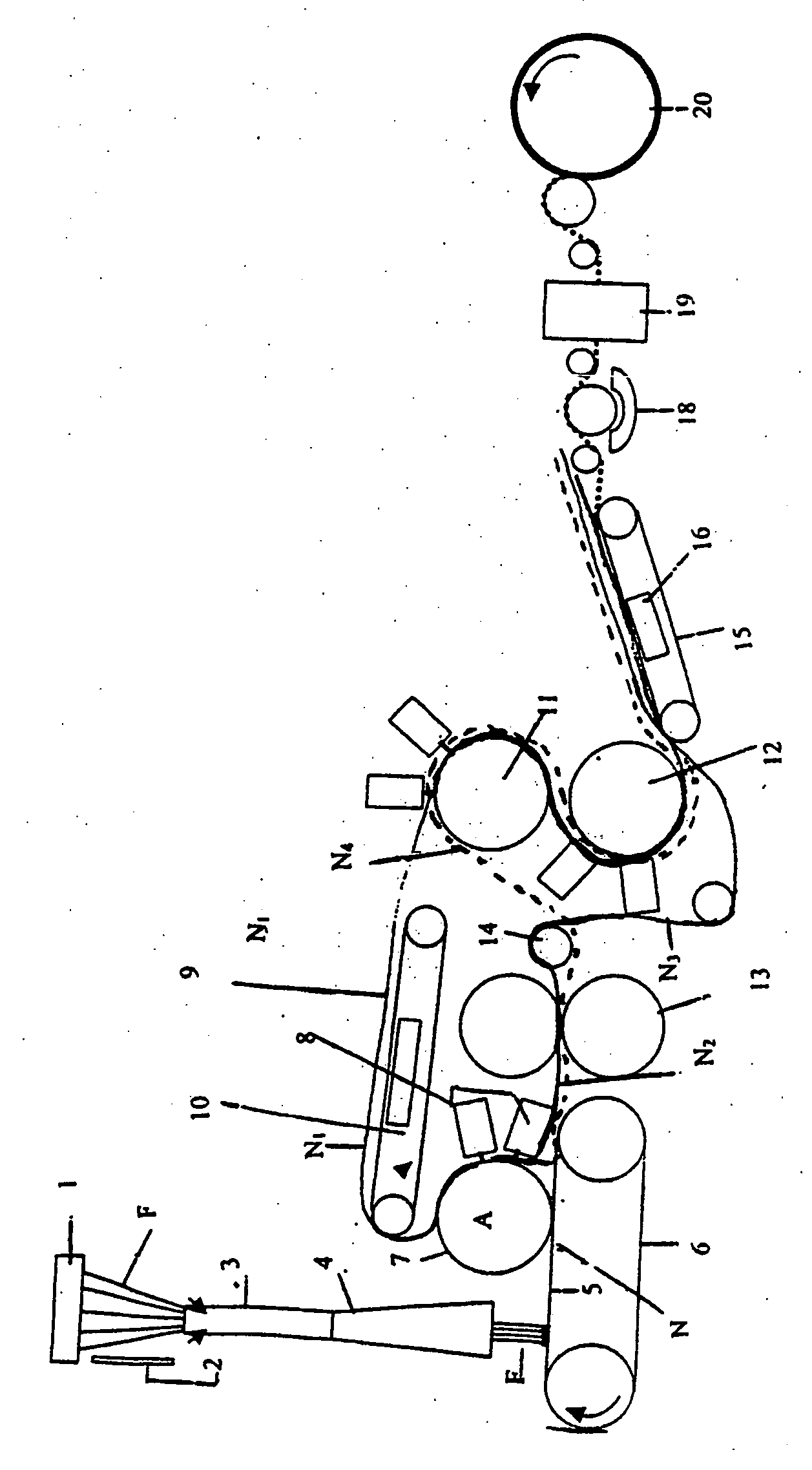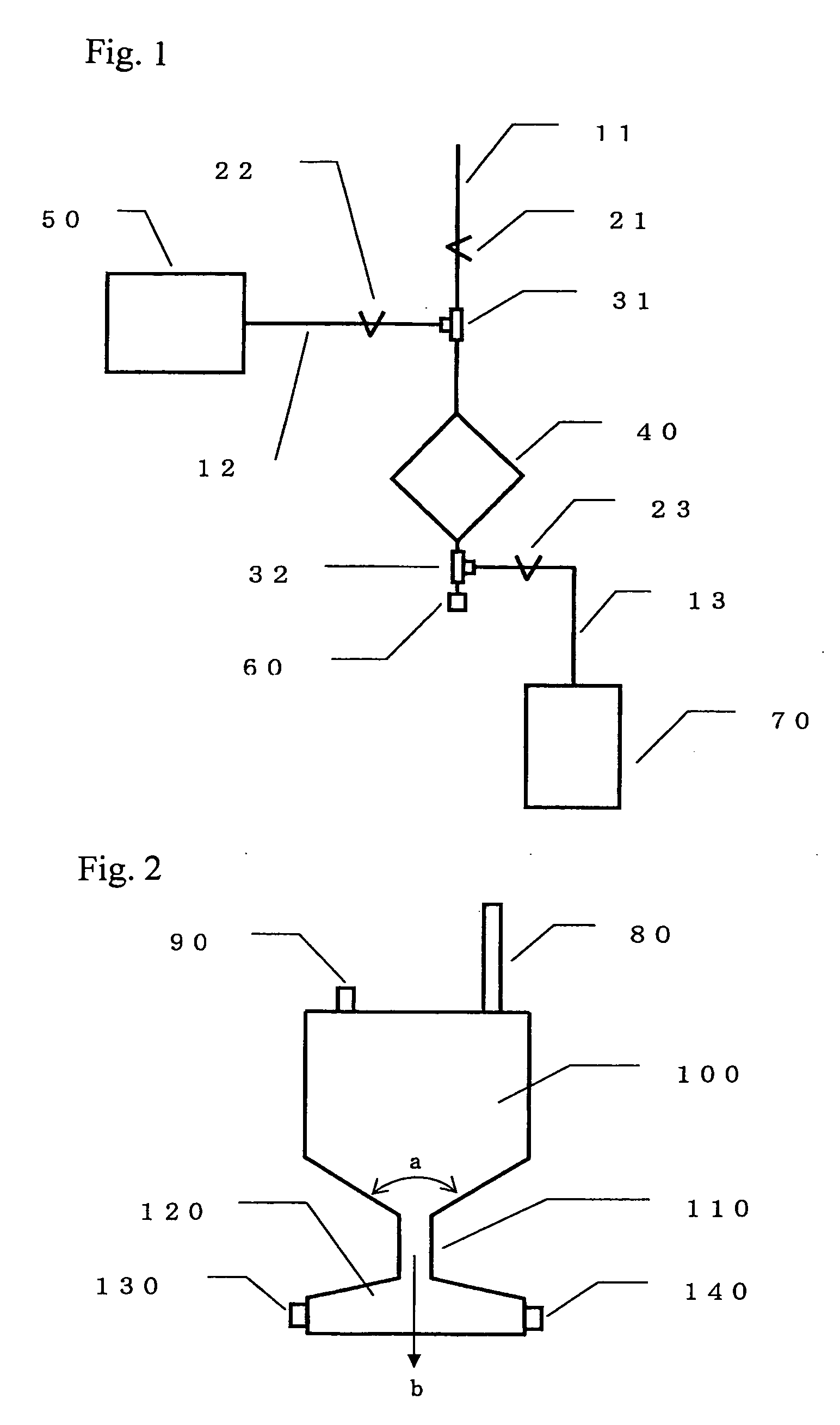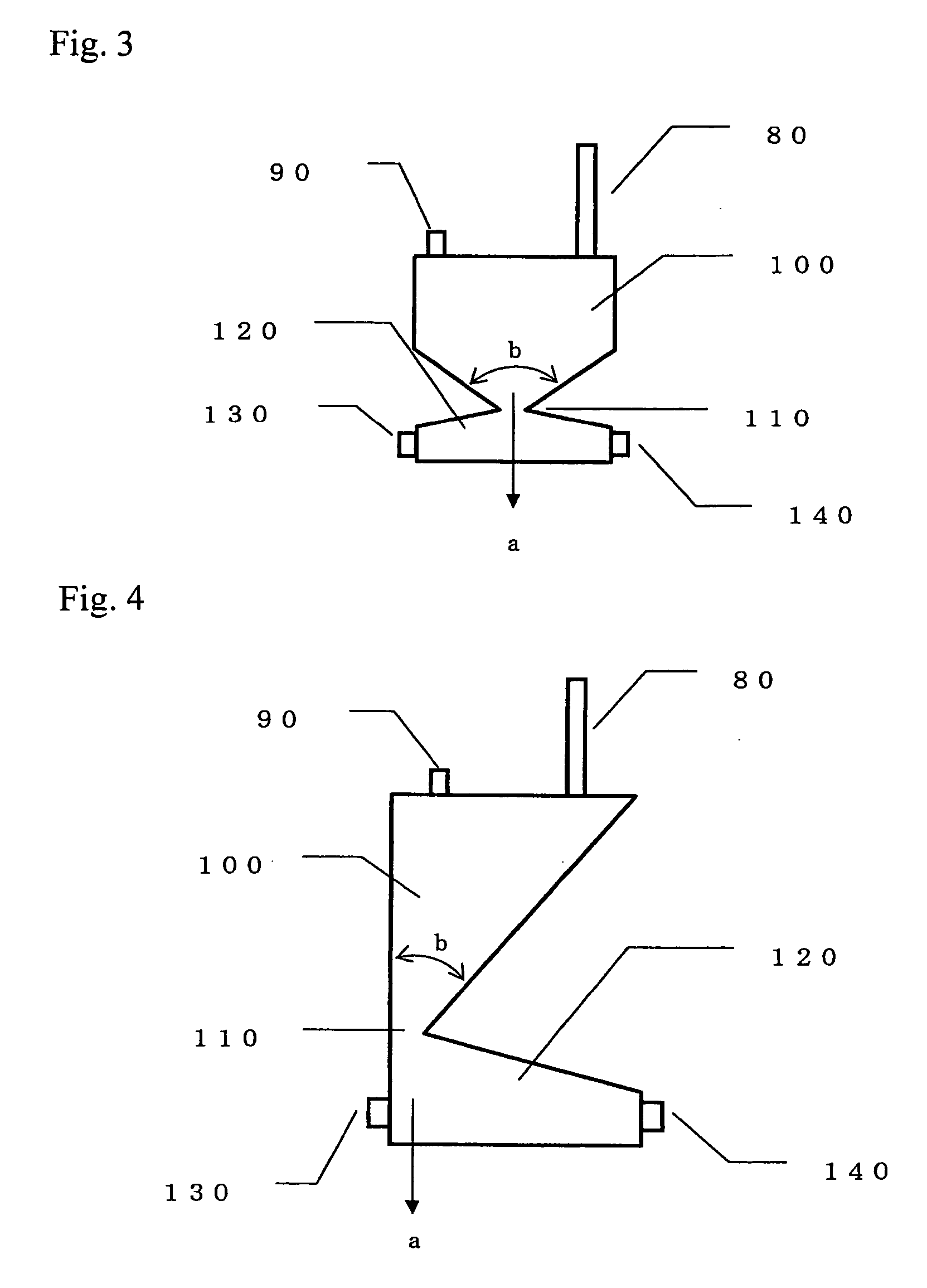Method for Preparing Cell Concentrate and Cell Composition
a cell concentrate and cell technology, applied in the field of cell concentrate preparation, can solve the problems of difficult to achieve the effect of reducing cryopreservation volume, stable recovery of nucleated cells, and complicated operations that require manipulative skills
- Summary
- Abstract
- Description
- Claims
- Application Information
AI Technical Summary
Benefits of technology
Problems solved by technology
Method used
Image
Examples
example 1
Method of Filtrating Layers Separated from Cord Blood Using an Erythrocyte Agglutination Reagent
(1) Production of Cell Separation Filter Device
[0123] The following container was prepared: a polycarbonate container consisting of an upper container and a lower container, which has an inside dimension after fabrication consisting of 43 mm long, 43 mm wide, and 2.9 mm high (effective filtration area: 18.5 cm2; internal volume: 7 cm3), and which has a liquid outlet and a liquid inlet on the longest diagonal line. A filter material was produced from: 0.14 g of a polyester non-woven fabric with an average fiber diameter of 12 μm acting as a first aggregate-capturing material; 1.28 g of a polyester non-woven fabric with an average fiber diameter of 1.7 μm acting as a second nucleated cell-capturing material; and 0.19 g of a polyester non-woven fabric with an average fiber diameter of 1.1 μm acting as a third recovery solution-rectifying material.
[0124] Thereafter, from the inlet side of...
example 2
Method of Filtrating Layers Separated from Cord Blood Using Strong Centrifugal Force
(1) Production of Cell Separation Filter Device
[0129] The same device as that used in Example 1 was used.
[0130] The cell separation system shown in FIG. 1 was used.
(3) Cell Separation Operation
[0131] Clamps 21, 22 and 23 of the cell separation system shown in FIG. 1 had previously been closed. A 200-cm3 blood bag that stored 100 cm3 of CPD-added human cord blood (hematocrit value: 31.1%) was connected with a blood conduit 11, and the blood bag, which was in a state where it stood vertically, was then fixed to a centrifuge cup. The blood bag was centrifuged at 3,000 G for 12 minutes at 10° C. Thereafter, the blood bag and the cell separation system were gently taken out from the centrifuge cup, and the blood bag was then hanged. At this time, the contents in the blood bag were separated into the following 3 layers: an upper plasma layer; an intermediate buffy coat la...
example 3
(1) Production of Cell Separation Filter Device
[0142] The following container was prepared: a polycarbonate container consisting of an upper container and a lower container, which has an inside dimension after fabrication consisting of 43 mm long, 43 mm wide, and 2.9 mm high (effective filtration area: 18.5 cm2; internal volume: 7 cm3), and which has a liquid outlet and a liquid inlet on the longest diagonal line. A filter material was produced from: 1.37 g of a polyester non-woven fabric with an average fiber diameter of 1.7 μm acting as a first nucleated cell-capturing material; and 0.19 g of a polyester non-woven fabric with an average fiber diameter of 1.1 μm acting as a second recovery solution-rectifying material. Thereafter, from the inlet side of the above polycarbonate container, the above filter material was packed into the container such that it was packed around the upper container and around the lower container, so as to separate the space on the container inlet side ...
PUM
| Property | Measurement | Unit |
|---|---|---|
| thickness | aaaaa | aaaaa |
| thickness | aaaaa | aaaaa |
| packing density | aaaaa | aaaaa |
Abstract
Description
Claims
Application Information
 Login to View More
Login to View More - R&D
- Intellectual Property
- Life Sciences
- Materials
- Tech Scout
- Unparalleled Data Quality
- Higher Quality Content
- 60% Fewer Hallucinations
Browse by: Latest US Patents, China's latest patents, Technical Efficacy Thesaurus, Application Domain, Technology Topic, Popular Technical Reports.
© 2025 PatSnap. All rights reserved.Legal|Privacy policy|Modern Slavery Act Transparency Statement|Sitemap|About US| Contact US: help@patsnap.com



